Eco Tour Kunqiu Beach and Snake Island
Kunqiu Beach and Snake Island
Kunqiu Beach
Kunqiu Beach located in the northwestern part of Xiju. In the early time, there was a Kunqiu village, people who lived there are mostly soldiers in East China Sea Force and their families. The quantities of the residents had been up to hundreds. Later, East China Sea Force was disbanded, and the residents immigrated as well. Therefore, Kunqiu administrative organization disbanded then merged with Xiqiu Village nearby. Nowadays, there is only one family here. In Kunqiu, you may see some old houses, those are places where used to live by others. The faded Kunqiu keeps the original environment, and this is the reason why there are various intertidal zone creatures, for example, turbo cornutus, pollicipes mitella and jellyfish, etc. Kunqiu Beach is also a popular place to see blue tears and blue sands.
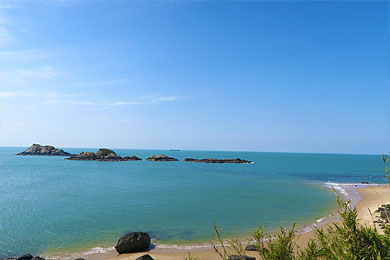
Blue sky, blue ocean and white beach. Isn't it a dream-like scene?
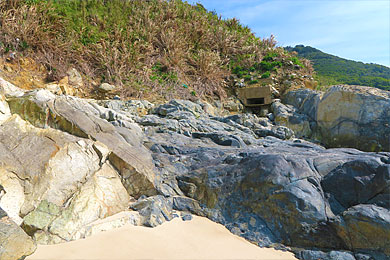
White sand, rocks and abandoned shelter. These three characters
are telling the beauty and the sadness of Xiju.
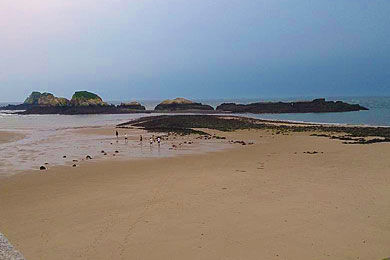
Low tide! It's time to collect some yummy seafood!
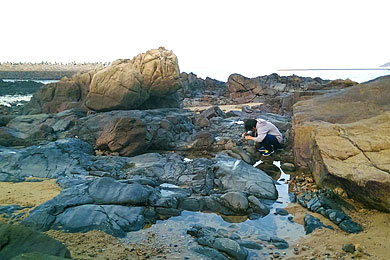
When collecting seafood, we can also learn about ecology.
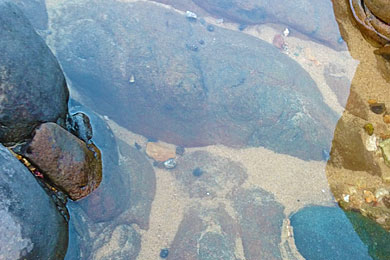
Do you see the jelly fish and crab?
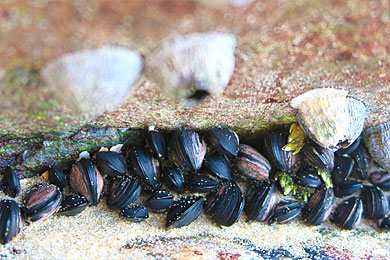
Barnacles and mussels.
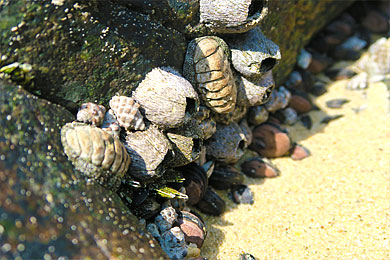
Barnacles, mussels and clams. I think I'm hungry now.
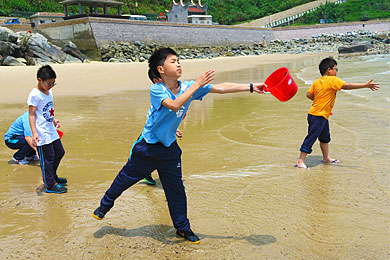
Bing-Hong is throwing small clams back to the sea. We have to
give young animals chances to grow up and breed.
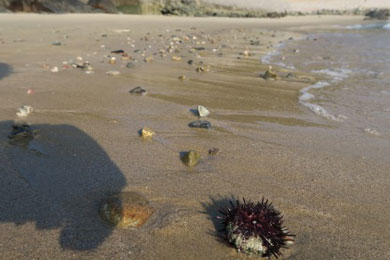
Kunqiu beach is full of surprises!

What a beautiful beach!
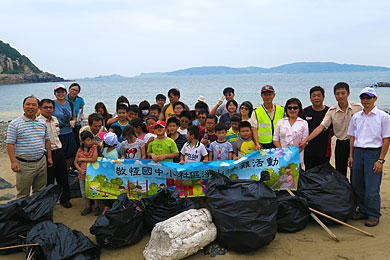
We clean up the beach with the community. It's important to protect our beautiful ocean.
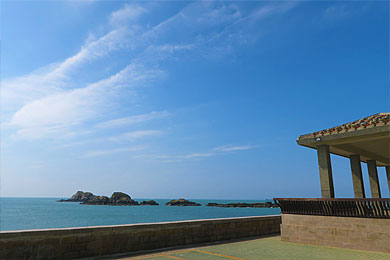
This pavilion is a great place so take a rest and watch crested turns.
Snake Island – Protected Area of Chinese Crested Tern
Snake Island is located in intertidal zone of Kunqiu. It was the place for military training before it became a protected area. According the research, there are roseate tern, black-naped tern, bridled tern, greater crested tern, and the endangered mythical bird – Chinese Crested Tern.
Terns come here for reproduction from April to October. It is spectacular when terns fly all over the sky and forage along the coast. At this period, people are not allowed to step on Snake Island but observe them on the shore.
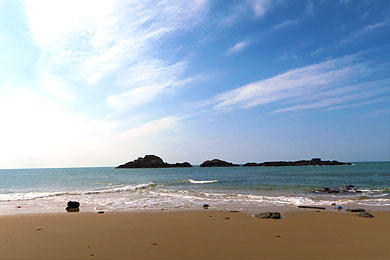
Trail to Snake Island appears only when the tide is low.
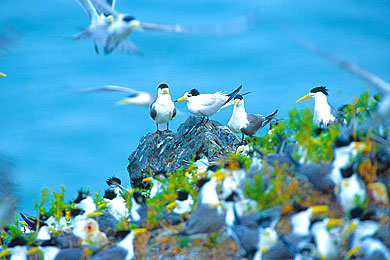
Matsu's unique location makes it heaven of migratory birds.

Chinese Crested Turns are very rare now.
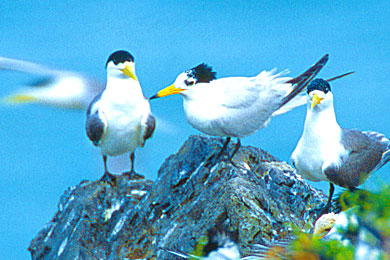
Chinese Crested Turnss
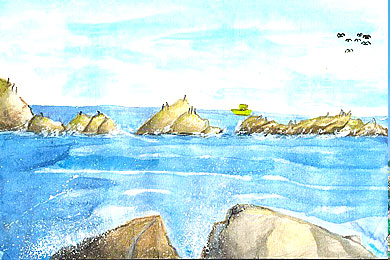
Snake Island by Cheng-You.
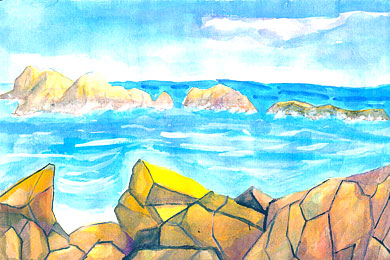
Snake Island by Wen-Yan.
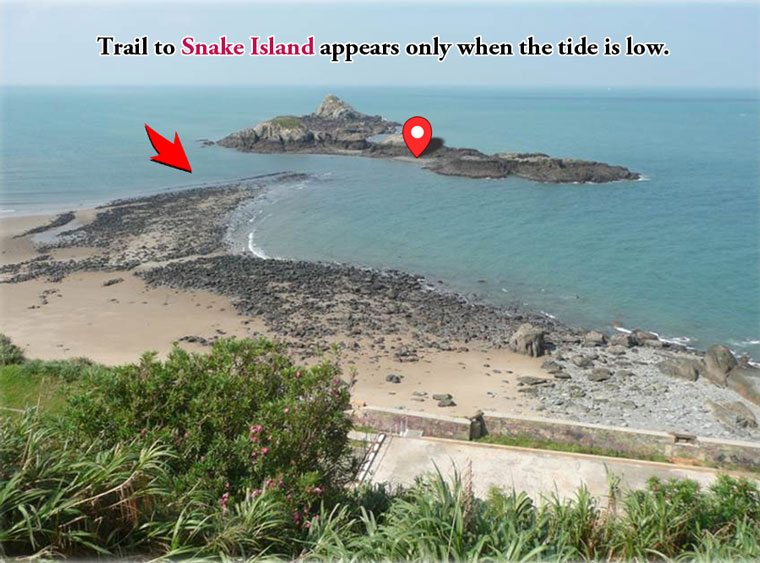
Trail under the sea to Snake Island
picture resource : Matsu National Scenic Area Administration
Blue Tears
The phenomenon of "blue tears" occurs in spring and summer, particularly during April to June. It is caused by a large amount of algae, which glow blue in the sea when disturbed by tidal waves. People compare this phenomenon to Grotta Azzurra in Italy. In early times, this phenomenon was once called "the water of silver anchovy" in Matsu because they thought that the algae, as prey, attract anchovy. Because blue tears float on the sea, people also call it "ghost on the sea" or "will-o'-the-wisp on the sea."
"Blue tears," or "red tide", "blooming" academically, is that eutrophic water release into the sea. It slows down the speed of the current, and the raising temperature makes the glowing dinoflagellates grows in a large quantity. Dinoflagellate glow blue at night time, and ostracods also glow blue when disturbed by tidal waves.
In Xiju, there are several popular spots to see blue tears, such as the dike behind the passenger waiting room at Qingfan harbor, Kunqiu Beach and Caipuao, etc.
To watch Blue Tear, there are 7 conditions must happen together
- No Light Pollution: Light pollution makes it hard to see the blue tear.
- Clear Sea Water: Clear water shows more glow.
- Temperature: If the temperature is too high, algae could die.
- Waves: The larger the wave, the more glow you see.
- Speed of Water Flow: Water flow influences algae to glow.
- Terrain: Slopes by the sea and barnacles on it makes algae easier to glow.
- Salinity: Algae could not survive after heavy rain. Large amount of rain water reduce the salinity.
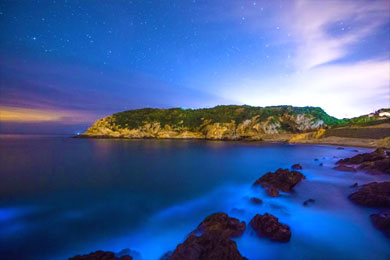
What a dreamlike scene!
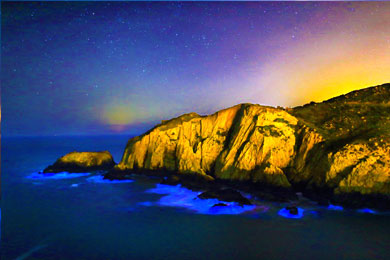
Blue Sea Elvs (藍色海精靈) by Mr. Chen, Ying-Zheng(陳英正)
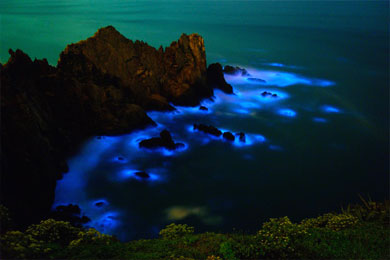
Tear of the Sea (海洋之淚) by Mr. Hsieh, Bai-Chi(謝百淇)
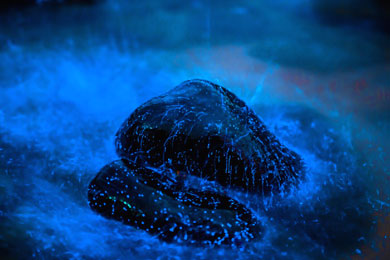
Magical Rock(點石成金) by Mr. Wang, Chang-Lin(王長琳)
Copyright belongs to Lianjiang County Government.
Blue Sands
When sea sparkles (noctiluca scintillans) flow to Xiju sea area, ostracods and dinoflagellates will eat them, and they flow with the waves, then stick to the sand when ebb. If you visit the beach at this time, you will step upon those ostracods and dinoflagellates, and they will glow similarly to blue tears because of the stimulation. During this period, the beach will as beautiful as the azure night sky, stunning and starry!
You may chance to bump into this amazing scenery between April and June. We suggest that you go to Kunqiu Beach after it gets dark, and you will have more chance to see blue sands when mid tide.

Love in Matsu (愛在馬祖) by Mr. Wu, Tzung-Tai(吳宗泰)
picture copyright belongs to Lianjiang County Government.